
After I had hit puberty, my ability to sleep through the night disappeared as my circadian rhythm shifted to the “owl” range. This was helped by my work schedule. I worked until 10pm, 11pm, or even midnight on weekends throughout high school. Even now, some 30 years later, I’m a natural owl who is forced to be a robin. Insomniacs After School accurately captures the stress people feel when they can’t follow their natural sleep rhythms. This stress and the misunderstanding the rest of the diurnal population have for owls sets the foundation for a charming slice-of-life and coming-of-age romance. This one isn’t a “will they, won’t they” romance but a “how will they” romance. As is becoming my norm, I will write spoilers for this story.
Before I get into the anime, let’s discuss high school stories for a moment. High school romance stories dominate anime, in part, because memories formed during our teen years tend to linger. Think about yourself. How many early childhood memories do you have compared to your high school memories? How do those teen memories compare to your adult memories? Some research I’ve read suggest we have more high school memories because of the newness of our experiences and because of the changes puberty sparks within the brain. This is a time before workaday adult routines smear the days into same-old-same-old which the brain doesn’t need to remember. New experiences, new information, and sudden threats to well-being tends to slow down our perception of time. Some research suggests time slows for people in sudden accidents, like car accidents, making a few seconds feel as if they are taking minutes. People report everything moving slowly around them, such as shards of glass floating past them like lazy, glittering snowflakes. High school combines these three elements to make memories more vivid. The events of teenhood can indeed feel threatening and so slow down your sense of time and embed more memories.
Whenever I watch high school romances or slice-of-life, there’s an innocence to them that I can’t identify with. I lack a frame of reference which allows me to link my own remembered experiences to the narratives. For those who share similar experiences as the fictional characters, they connect deeper to the stories. When I was 15, I was working a job after school and on weekends. When I was 16, I had a level of managerial status and responsibilities at that job. I had to manage staff, inventory, deal with problem customers, and other, rather severe, events. The fun and freedom I see within these stories and what I listen to people reminisce about sit outside my frame of reference. Stories like Blue Box have so much innocence to them. So when I encountered Insomniacs After School I was surprised to find a story which touches on some of my own experiences. Fiction is great for helping you vicariously experience events which are outside your own frame. But when a story has something that touches on your own memories, you can connect with it better. And that’s one reason why anime has so many high school stories, even for seinen and josei genres. Insomniacs After School categorizes as a seinen.
Okay, that’s enough with my digression.

Ganta Nakami struggles to sleep at night. Trying to find a place to nap, he slips into the school’s abandoned astronomical observatory. Inside the observatory he encounters a seemingly carefree girl named Isaki Magari who also suffers from insomnia. The two open a little about their struggles with sleep and decide to turn the observatory into a nap-nest. However, soon after they make the space homey, a teacher named Usako Kurashiki discovers them. After asking them about their relationship and how they are using the space (asking if they were having sex), she bans them from the space for a time. But she sympathizes with their sleep problem and becomes the advisor for the Astronomy Club, which includes Ganta, Isaki, and the school’s resident cat. The Astronomy Club had closed down, but Usako connection Ganta and Isaki to Yui Shiromaru, an alumna who was the last member of the club. Yui teaches Ganta the basics of astrophotography, which becomes the center of the club’s activities. The club gives Isaki and Ganta a legitimate reason to be up late at night and a reason to spend time together.
Over the course of the story, their awkward friendship grows warmer and closer. Isaki’s bouncier personality balances Ganta’s more serious personality. The reasons behind their insomnia differs, but both had traumatic experiences in their earlier childhood which prompted their sleeplessness. While this can happen, circadian rhythms tend to be more genetically determined, so this detail, while good for the story, is a bit misleading for those who don’t understand the research surrounding sleep cycles. In Ganta’s case, he doesn’t want the day to end out of fear that the next day will be worse. This was caused by his mother leaving him and his father. Isaki has a heart defect which requires frequent hospitalization and even surgeries which leaves scars on her torso. Her experience with this gave her gusto for life, but it leaves her afraid to sleep at night. But when they are together, both are able to sleep peacefully.
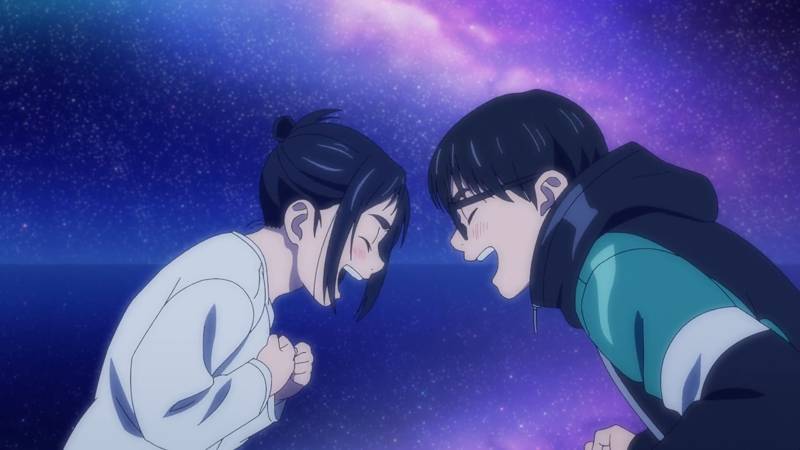
The story focuses on how Ganta and Isaki gradually grow into a couple, assisted and gently pushed by their friends. You don’t find love triangles or soap-opera drama like most anime romance have. Instead, you have a gentle, realistic and gradual development of their relationship. The anime ends with a big photography trip. The Astronomy Club is going to enter a national astrophotography contest, so Ganta and Isaki plan to travel to various areas to take photos. Fortunately, Isaki’s grandmother has a home in a central location. At first, Isaki’s elder sister–who is one of the few who treats her normally–stays with them, but when her boyfriend messages her, she bails, leaving Ganta and Isaki alone.
The pair have moments of awkwardness with this development, but they get along so well that they settle into a comfortable cohabitation. When Ganta tells Isaki about his own reason for insomnia–Isaki had told him hers earlier in the story–Isaki kisses him. She refuses to have Ganta talk about the kiss; instead, she prefers to let the moments they have together linger. Ganta, after some thinking, decides to confess to her during their last photography stop. She reciprocates.

Insomniacs After School is a realistic, gentle story of acceptance, mutual understanding, and of friendship blossoming to love. There’s some misunderstandings, but Isaki and Ganta are both more mature than most romantic anime teens. They talk through their misunderstandings and gradually open to each other. Ganta becomes more rested and sociable, and Isaki finds someone beyond her elder sister who treats her normally instead of some girl who could die if strained. They find comfort in each other and their shared insomnia and experiences. They are surrounded by supportive friends; although Isaki gets into trouble with her parents when she refuses to return home after her elder sister bails on their trip.
Insomniacs After School ranks with Horimiya with their development of romance and handling of the theme of acceptance. The anime has solid animation, with some expected budget-balancing stills and scenes, and presentation. If you enjoy more realistic, slower-paced romance stories Insomniacs After School is one to watch.


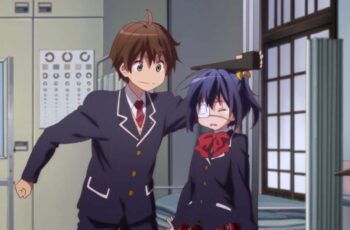
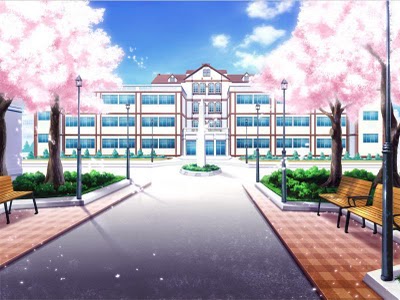
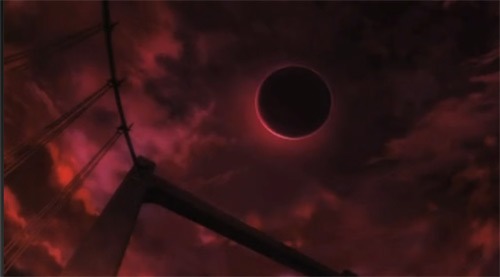
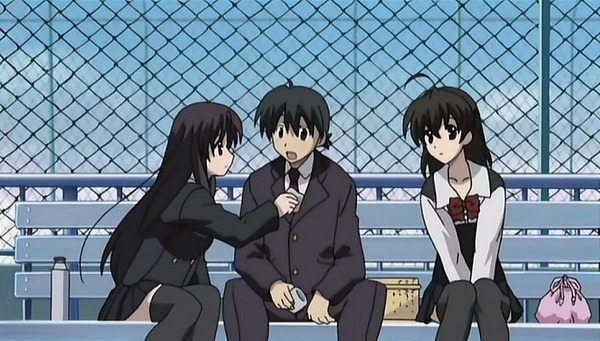
I wonder if ASMR has anything to do with this anime
There are a few scenes with ASMR moments. The characters also fall asleep to each other’s radio’s broadcasts, but I surmise this has more to do with the comfort they give each other rather than relate to ASMR.